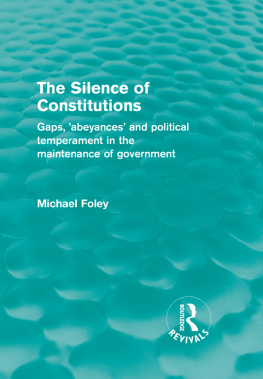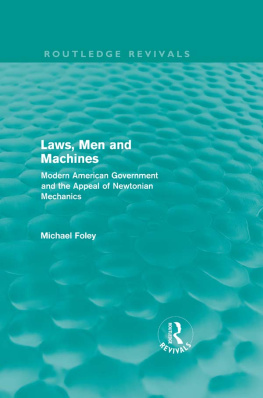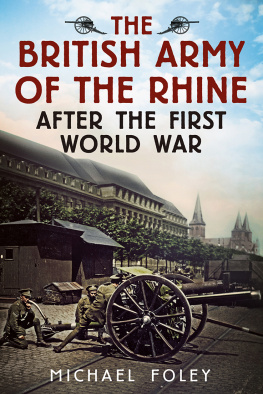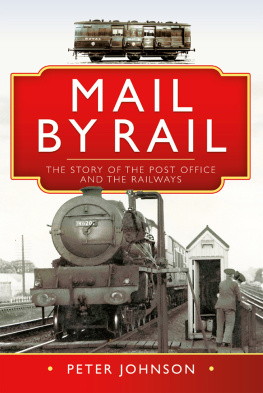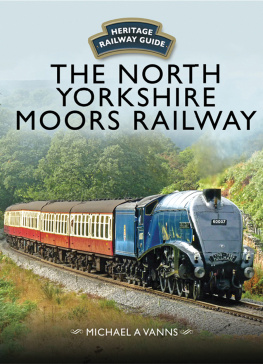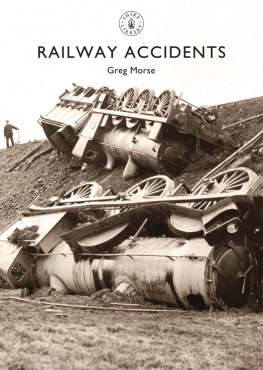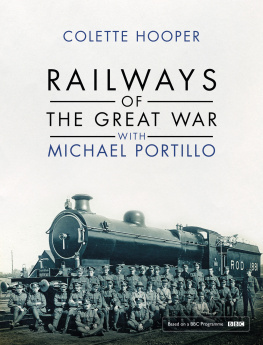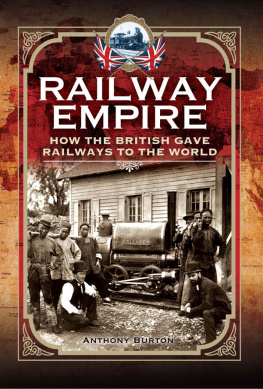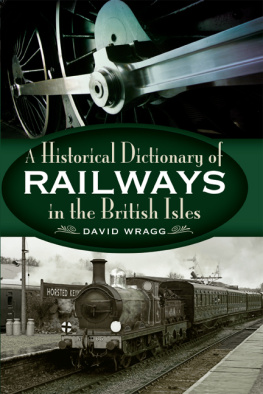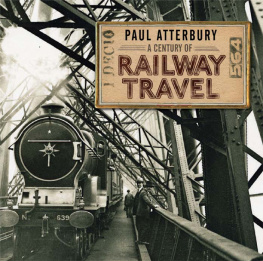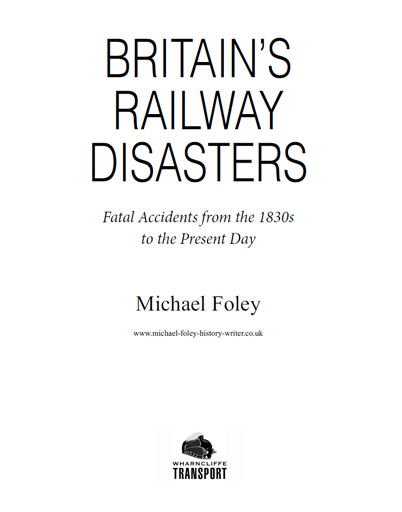
First published in Great Britain in 2013
by Wharncliffe Transport
an imprint of
Pen and Sword Books Ltd
47 Church Street
Barnsley
South Yorkshire S70 2AS
Copyright Michael Foley, 2013
ISBN 978 1 78159 379 0
eISBN 9781473831865
The right of Michael Foley to be identified as the author of this work has been asserted by him in accordance with the Copyright, Designs and Patents Act 1988.
A CIP record for this book is available from the British Library
All rights reserved. No part of this book may be reproduced or transmitted in any formor by any means, electronic or mechanical including photocopying, recording or by any information storage and retrieval system, without permission from the Publisher in writing.
Printed and bound in England by CPI Group (UK) Ltd, Croydon, CR0 4YY
Typeset in Minion by CHIC GRAPHICS
Pen & Sword Books Ltd incorporates the imprints of Pen & Sword Archaeology, Atlas, Aviation, Battleground, Discovery, Family History, History, Maritime, Military, Naval, Politics, Railways, Select, Social History, Transport, True Crime, and Claymore Press, Frontline Books, Leo Cooper, Praetorian Press, Remember When, Seaforth Publishing and Wharncliffe
For a complete list of Pen and Sword titles please contact
Pen and Sword Books Limited
47 Church Street, Barnsley, South Yorkshire, S70 2AS, England
E-mail: enquiries@pen-and-sword.co.uk
Website: www.pen-and-sword.co.uk
To George Morgan, a very brave little boy
Other books by Michael Foley
Front-Line Essex Sutton, 2005
Front-Line Kent Sutton, 2006
Essex, Ready For Anything Sutton, 2006
Hard As Nails Spellmount, 2007
Front-Line Suffolk Sutton, 2007
Front-Line Thames History Press, 2008
More Front-Line Essex History Press, 2009
Essex in the First World War History Press, 2009
Prisoners of the British Bank House Books, 2009
Essex at War Through Time Amberley, 2009
London Under Attack History Press, 2010
London Through Time Amberley, 2010
Havering Through Time Amberley, 2010
Barking and Dagenham Through Time Amberley, 2010
Londons East End Through Time Amberley, 2011
Disasters on the Thames History Press, 2011
Essex Through Time Amberley, 2012
Essex at War in Old Photographs Amberley, 2012
Pioneers of Aerial Combat Pen & Sword Aviation, 2012
Martello Towers Amberley, 2013
CONTENTS
ACKNOWLEDGEMENTS
T o Linne Matthews for her hard work in editing this book. To www.railwayarchives.co.uk for helping me find the information on a number of the accidents, and to www.transporttreasury.co.uk for the use of some of their images.
NOTE ON ILLUSTRATIONS
Unless otherwise acknowledged, the pictures in this book are from the authors own collection of postcards, magazines and old photograph albums and it has been impossible to determine if any copyright is attached to them. Any infringement of copyright as a result of their publication is entirely unintentional; if any copyright has been infringed, the author extends his apologies to the parties concerned.
INTRODUCTION
T ravelling by train would seem to be one of the safest ways to make a journey as trains run on rails, which in normal circumstances they do not leave. Early trains were quite slow in comparison with those of today so youd think they would have been even safer. It will perhaps then come as a surprise to learn that there were numerous railway accidents resulting in fatalities from the early 1830s. In 1855 there was even a fatal accident involving the Royal Train.
There have been hundreds of fatal accidents since the arrival of rail travel in Britain. In the past there were scarcely any periods longer than a few months in some cases weeks when fatal accidents did not occur, although happily this is no longer the case.
Actual rail accident fatalities over the years number in the thousands. The accidents with the highest number of fatalities mainly took place in the twentieth century, including one incident in which more than 200 deaths occurred. Perhaps this was due to the increasing speeds that trains travelled at although high speed was not necessarily the cause of the accidents.
Although a very modern form of transport at its inception, in its early days the railways were ruled by ancient laws. One of these was the deodand a fine that was charged on whatever caused a death, most usually a horse and cart at this time. In some early fatalities on the railways, the deodand was set at the value of the engine and train.
There was even a medical disorder related to train crashes from the nineteenth century known as railway spine, or Erichsens Disease. Doctors began to notice similar symptoms occurring in those involved in railway accidents, including pain and sleeplessness. Sufferers often claimed damages through the courts; it seems that the compensation culture is not just a modern phenomenon.
Another feature of nineteenth-century railway accidents was the introduction of the term telescoping. Its meaning is obvious in that a telescope slides into itself, one part into another. Unfortunately in relation to trains, it described how carriages slide into one another as the result of a collision, with obviously horrific effects on passengers.
There are some amazing stories connected with railway accidents. In one carriage of a train that crashed at Staplehurst in 1865 was a very famous passenger Charles Dickens, who, ignoring his own safety went to the aid of several severely injured and dying passengers. Not many people realize how close the country came to losing one of its most famous authors and never knowing the works he penned after the crash.
Another strange connection with the same accident at Staplehurst was a lady who, ater hearing of the crash, decided to travel back to London by Thames steamer rather than on the train. She was a passenger on the ill-fated Princess Alice , which collided with another ship and sank with hundreds of fatalities.
A good source of information on many of the early railway fatalities is contemporary newspapers. This is where much of the information in this book will come from. Unfortunately, the headlines in the Victorian press made those of todays tabloids look tame by comparison; if they were not always entirely factual, they were at least entertaining.
There was a strange similarity in many newspaper reports of accidents. It was clear that many different papers printed the same story. There was obviously some central source and in the 1890s reports began to be credited to telegram services such as Central News Telegrams and Press Association Telegrams.
Later accidents normally involved an official investigation and it is fascinating to see how the reports on these compare with newspaper stories about the accidents. There may well have been a limited number of causes of early railway accidents and it will be interesting to discover if any of those causes were repeated in later catastrophes.
CHAPTER 1
RAILWAY HISTORY
I think most people would, if asked, think of the nineteenth century as being the time of the beginning of the railways but the actual idea of running trucks on rails comes from a much earlier period. Rails were used to carry trucks in mines in Europe in the sixteenth century. The first British use of rails in mines came in the seventeenth century, with the trucks being pulled by horses or the miners themselves. The rails were made from wood rather than metal.



